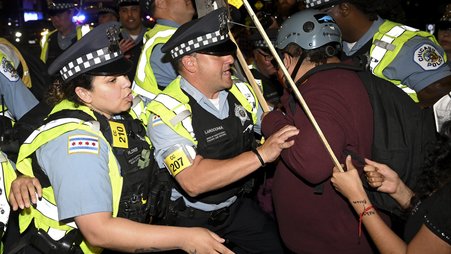
In an important ruling for the press’s ability to report freely on the work of other outlets, the Second Circuit Court of Appeals has ruled that including a screenshot in an article commenting on another article's reporting is not copyright infringement. This is welcome news in an age where copyright can be used to restrict what newspapers can and can’t say about each other.
The article in question, a 2017 New York Post piece titled "Why I won't date hot women anymore," described three vignettes from people who had supposedly sworn off the very attractive. The leading anecdote concerned a 40-year-old private equity executive who, post-epiphany, had become engaged to a "merely beautiful" woman. The article was illustrated with a photograph of the exec that ran at the top of the story. Mic Network, a media company, reported on the backlash that the article had received and incorporated a screenshot that included part of that photograph.
Photographer Stephen Yang sued Mic for copyright infringement, and Mic moved to dismiss the case on the grounds that its inclusion qualified as a fair use — meaning, not copyright infringement. The Southern District of New York agreed, providing a fair use analysis that came to the conclusion that the purpose and character of Mic's use was clearly “transformative” and used to identify and provide commentary on the underlying article. (Whether a use is “transformative,” and how much that should affect the analysis, has been the subject of lots of legal analysis, including in a case headed to the Supreme Court in the next term. In this case, the court didn’t get bogged down in the details.)
Yang appealed, arguing that because his photograph was not the target of criticism, the use wasn't fair — an argument the Second Circuit has now rejected. That's an important win for the press and its ability to report on the media itself — in part, because copyright has long been one of the levers of control that the subjects of news stories use to exert influence over how they may be covered.
Notably, before the Hulk Hogan case in state court that ultimately bankrupted Gawker, the former wrestler and his attorney Charles Harder filed a federal lawsuit for copyright infringement over the same video that formed the basis of the later suit. And in just the past several years, a guest at Donald Trump’s private golf club sued outlets making use of his photos to report on the newsworthy actions of the then-president.
Photographs in particular have become recognized as a source of potential liability for news outlets who could face ruinous damages at worst, or expensive and stressful litigation at best. That sense has been heightened by an unusual ruling also in the Southern District of New York, finding that embedding a photo directly from a social media post could possibly constitute copyright infringement. (After that ruling, the parties settled out of court, which meant the Second Circuit did not get a chance to weigh in on an appeal.) One consequence of this uncertainty is that, likely in an effort to limit their possible exposure to lawsuits, some sites have taken to removing images from their archives en masse.
As we’ve long argued, news reporting relies on fair use. The actual practice of fair use, in turn, relies on firmly established principles and precedents that can ward off litigation — or at least limit its scope. Although it’s unfortunate that the current case has dragged on for nearly four years, its unambiguous result in Mic’s favor may discourage other plaintiffs from following suit.



